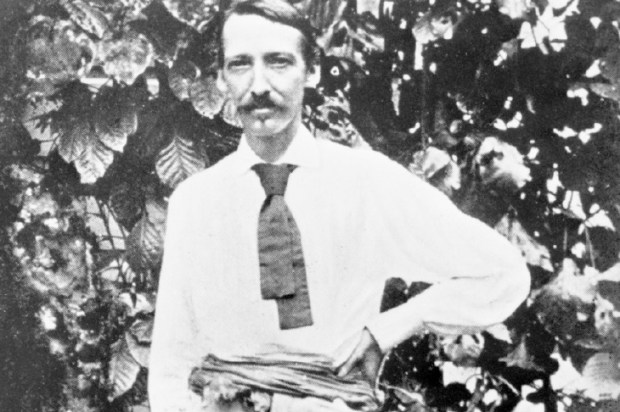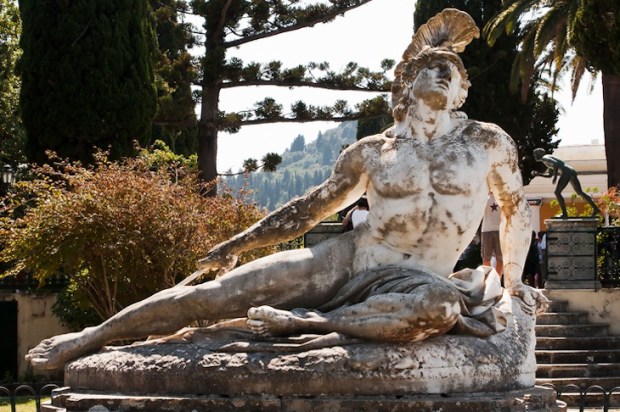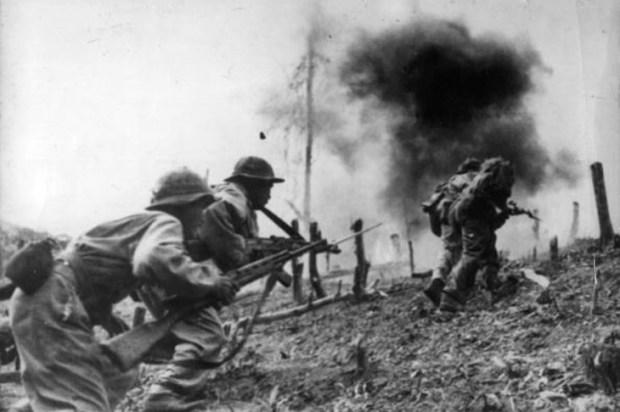The symptoms of the Spanish flu could be ghastly. Perhaps Laura Spinney should have chosen her title with more care because rather than becoming pale and interesting, as with tuberculosis, frequently the flu’s victims turned completely black before dying. ‘It is hard,’ one US army doctor observed, ‘to distinguish the colored men from the white.’
The pandemic is often thought of as a forgotten catastrophe. That is despite its monumental scale. The death toll, which peaked in the autumn of 1918, is variously estimated to be between 50 million and 100 million — far exceeding the 17 million fatalities of the Great War. But have we really forgotten the Spanish flu — and, if so, why?
Spinney is both a novelist and science writer. She has a knack for timing, too. Her account of the flu comes out ahead of what is likely to be a pack of centenary volumes next year. Her book is ambitious, perhaps too ambitious. She wishes to reappraise the pandemic from all angles: historic, scientific and cultural. A central part of this is to examine how and why the pandemic has been remembered, or not.
Spinney points to various kinds of memory. She cites family histories, formal historical accounts and — that nebulous beast — the collective or popular memory. It transpires that, for the first couple of these at least, the Spanish flu is far from forgotten. Frequently, individuals are aware of relatives who died. And when it comes to written history, Spinney gives a figure of no fewer than 400 books produced on the pandemic to date. Admittedly, this is dwarfed by 80,000 volumes on the first world war, but interest in the flu has never faded for historians. Indeed, you could say that writing histories of the pandemic is itself mildly endemic.
That leaves popular memory. Spinney believes the pandemic has been forgotten by most of us partly because so many deaths occurred outside Europe and North America. Accordingly, she delves into the unfolding of the tragedy around the globe, looking at Brazil, China, Iran, India and Russia. There is fascinating detail of the behaviour of diverse populaces in extremis. In a desperate attempt to stem the disease’s onslaughts, the residents of Odessa staged a ‘black wedding’ — the ancient Jewish shvartze khasene ritual for warding off outbreaks of infection, in which a pair of beggars were recruited for a macabre marriage ceremony in a cemetery. In Rio de Janeiro, meanwhile, civilised constraints collapsed in the aftermath of the pandemic’s onslaughts, when revellers ran riot during the carnival of 1919 and reports of rape surged.
Spinney also examines research into the flu’s origins, again from a global perspective. She looks at theories that the flu first emerged among British troops in the training and hospital camp at Étaples, near the Western Front. Other contenders are rural Kansas and northern China’s Shanxi province. Nevertheless, so far the only certainty remains that wherever the Spanish flu sprang from, it was definitely not Spain.
No treatment was available other than careful nursing, though numerous purported cures and prophylactics were touted. These included smoking and drinking which — understandably enough — proved popular. Blood-letting was revived when it appeared to bring relief to some patients. Medical researchers got no further than establishing that the disease was viral. At the time this was of little use, because it would not be until 1936 that the first crude flu vaccine appeared.
Spinney is strongest when she delves directly into the events of the pandemic and the medical science around it. Elsewhere she runs into difficulties. An elliptical approach works well enough for asteroids, but is not necessarily beneficial for historians. Her attempts to analyse the myriad potential historical effects of the pandemic lack focus and are often tenuous. At times, she risks descending into open-ended cultural studies discourse, complete with contestable terminology. Here and there, ‘historiography’ and ‘the other’ erupt from her text, linguistic boils begging to be lanced.
When it comes to drawing conclusions about the pandemic’s absence from folk memory, Spinney appears overwhelmed by the sheer mass of material she has assembled. That is a shame, because most of the evidence for solving the mystery is present in her book and it is not hard to join up the dots. As she points out, in Britain deaths from the flu were lower per capita than for much of the rest of the world. In fact, they were substantially lower in total than our fatalities in the first world war. Moreover, and as she reminds us, the pandemic was far shorter in duration than the war. In sum, therefore — and while global recollections will vary hugely — the reality is that it is far from surprising that the Spanish flu pandemic is much less well remembered by us than the Great War.
Got something to add? Join the discussion and comment below.
Get 10 issues for just $10
Subscribe to The Spectator Australia today for the next 10 magazine issues, plus full online access, for just $10.
You might disagree with half of it, but you’ll enjoy reading all of it. Try your first month for free, then just $2 a week for the remainder of your first year.














Comments
Don't miss out
Join the conversation with other Spectator Australia readers. Subscribe to leave a comment.
SUBSCRIBEAlready a subscriber? Log in